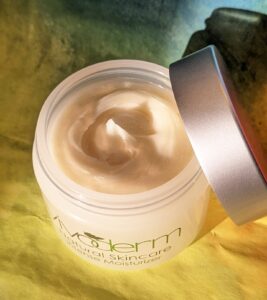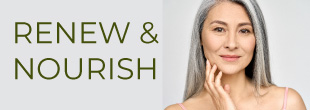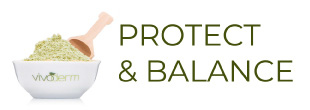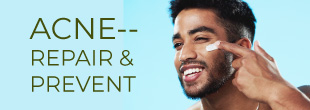
Seasonal Skincare Tips for Fall
As the seasons change, so do the needs of your skin. Fall brings cooler temperatures and lower humidity levels, which can have an impact on your skin’s health and appearance. Here are some seasonal skincare tips to help you maintain a healthy and radiant complexion during the fall:
- Hydrate: Even though it’s not as hot as summer, your skin can still become dehydrated in the fall. Use a hydrating moisturizer to lock in moisture and prevent dryness. Consider switching to a thicker, more emollient moisturizer, like the our Intense Moisturizer, compared to what you used in the summer.
- Sunscreen: Don’t put away the sunscreen just because summer is over. UV rays can still damage your skin in the fall. Use a broad-spectrum sunscreen with at least SPF 30, especially if you spend time outdoors.

Vivoderm Intense Moisturizer
- Exfoliate: Exfoliation helps remove dead skin cells, revealing fresher, brighter skin underneath. However, be gentle when exfoliating, as your skin may be more sensitive in the fall due to lower humidity.
- Lip Care: Cool, windy weather can lead to chapped lips. Use a nourishing lip balm with SPF to keep your lips soft and protected.
- Avoid Hot Water: Long, hot showers can strip your skin of natural oils. Opt for lukewarm water instead and limit your shower time. Consider using a moisturizing body wash to help retain skin hydration.
- Humidifier: As indoor heating systems start running, the air in your home can become dry. Using a humidifier can help maintain optimal humidity levels, preventing your skin from drying out.
- Fall Foods: Incorporate seasonal fruits and vegetables into your diet, such as apples, pumpkin, and sweet potatoes. These foods are rich in antioxidants and vitamins that can benefit your skin.
- Switch to a Gentle Cleanser: If you’ve been using a foaming or gel cleanser in the summer, consider switching to a creamier, more hydrating cleanser for the fall to prevent over-drying your skin. The Vivoderm facial cream cleanser is perfect for moisturizing while cleansing!
- Serums: Consider adding a serum with hydrating and soothing ingredients like hyaluronic acid or niacinamide to your skincare routine. Serums can penetrate deeper into the skin and provide extra moisture and protection.
- Stay Hydrated: Drinking enough water is essential for maintaining healthy skin. Even in cooler weather, make sure you stay adequately hydrated.
- Protect Your Hands: Hands can easily become dry and cracked in the fall. Apply a rich hand cream regularly, and consider wearing gloves when the weather gets particularly chilly.
- Consult a Professional: If you have specific skin concerns or conditions, consider consulting a dermatologist for personalized advice and treatments. You can also send us a DM or email to Vivoderm directly to ask Dr. H any questions about your skincare needs!
Remember that everyone’s skin is different, so it’s essential to pay attention to how your skin reacts to changes in your skincare routine. Adjust your regimen as needed to keep your skin healthy and comfortable throughout the fall season.






 Every one wants to have blemish-free skin that can catch any one’s eye. You will be overwhelmed to know that it is possible to own such skin type with natural skin care treatments. Yes, it is true that with these treatments anyone can look beautiful and blemished free. Generally, these problems arise due to lack of essential vitamins and minerals in the body. Vital body nutrients like biotin, pantothenic, niacin, riboflavin, etc, are required to have a healthy glowing skin.
Every one wants to have blemish-free skin that can catch any one’s eye. You will be overwhelmed to know that it is possible to own such skin type with natural skin care treatments. Yes, it is true that with these treatments anyone can look beautiful and blemished free. Generally, these problems arise due to lack of essential vitamins and minerals in the body. Vital body nutrients like biotin, pantothenic, niacin, riboflavin, etc, are required to have a healthy glowing skin.